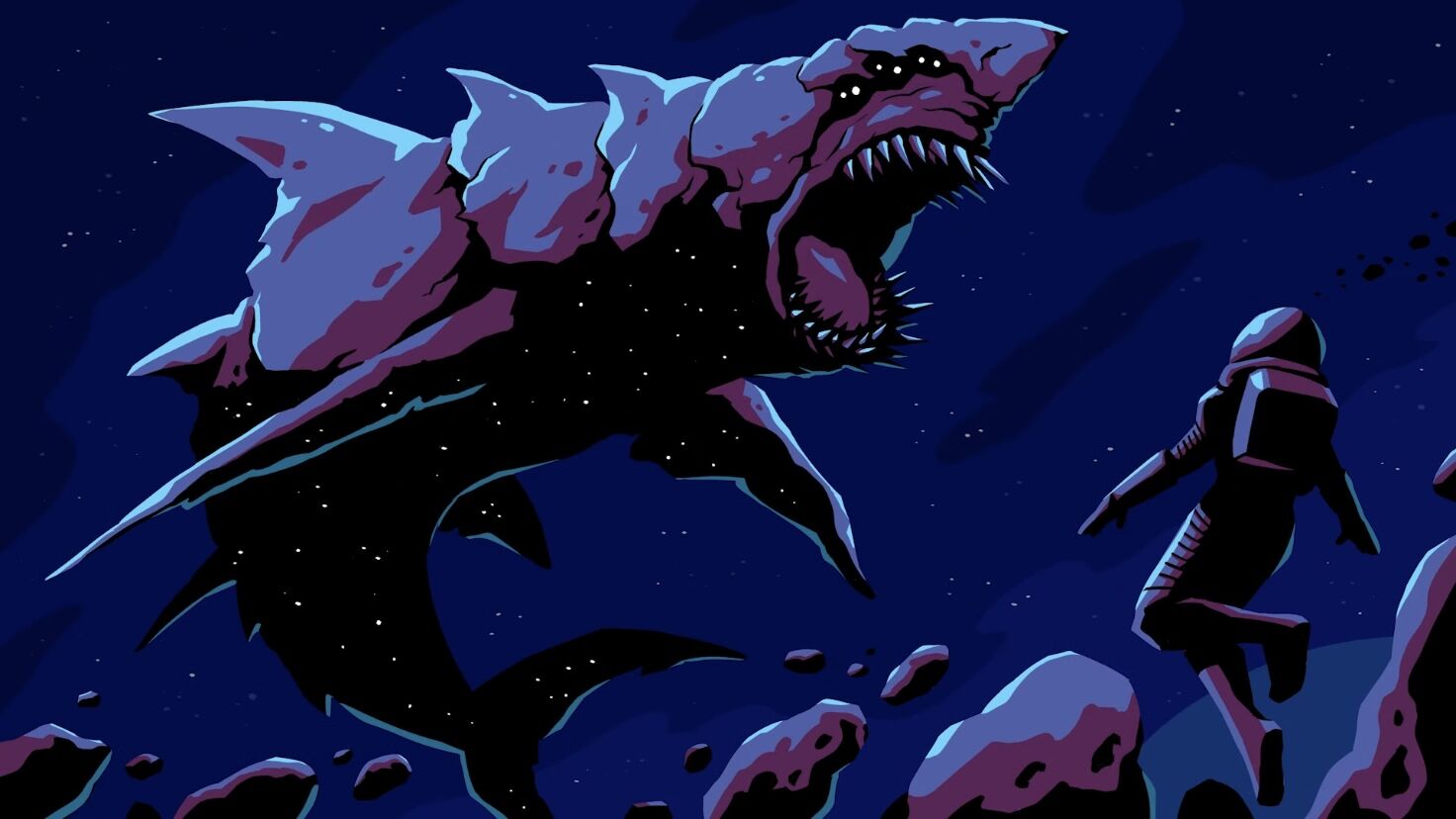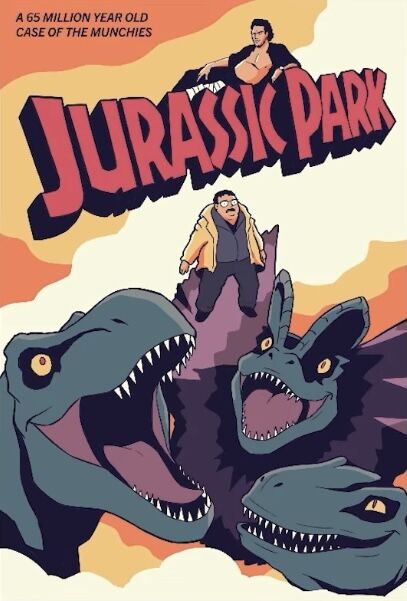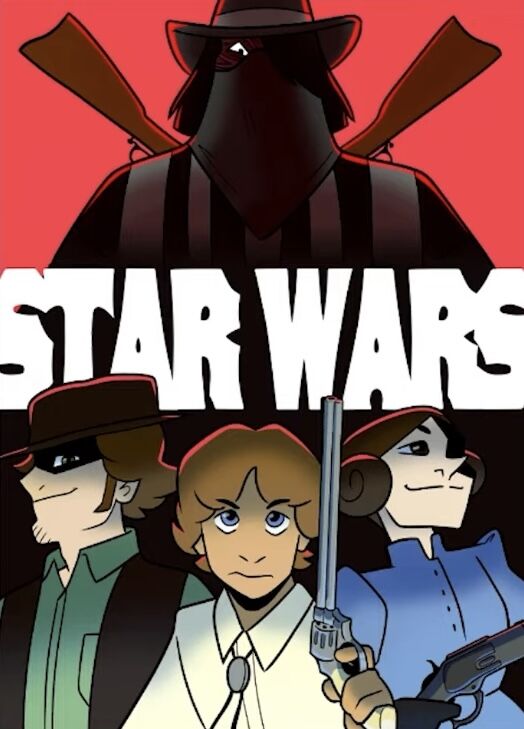

"Space Bruce"--Jaws as a sci-fi
By Nathan Yaffe on Drawfee
By Nathan Yaffe on Drawfee


"Camp Rock as a zombie apocalypse" movie poster
By Karina Farek on Drawfee
"Star Wars: A New Hope as a western" movie poster
By Jacob Andrews on Drawfee
To begin, lets take a look at three very different stories:
-Top Gun
-Dune
-The Great Gatsby
Three very different plots, three very different locations, and three very different casts of characters. Despite their differences, they are all visually descriptive, in which each author brought the most of these stories through their style.
Style is not limited to the words an author uses or how it all flows together. Style can be interpreted within the fictional world as well, in ways such as clothing, a character’s diction, the music choice, the location and its impacts, and even things as big as religions present or ceremonies commonly celebrated. Style makes a story memorable and gives a uniqueness to it all, as well makes it so things in the plot and setting make sense from beginning to end. For example, because of the clothing style and expectations of women in the 1920s we see a different side of female characters in The Great Gatsby than Top Gun's wild haired blondes of the 60s. If you put The Great Gatsby's Jordan in Top Gun, the person described as poised and beautiful but also physically strong (from specific emphasis on defined slender arm muscles and being a sports star) would be a seemingly completely different person with clothes and hair that matches the trends of the 60’s—70’s. Put her in Dune and she would be described as not even worth the water because of her very slender figure. Without an author’s style and the styles within the story’s world (clothing style, living style, morals, family units/tribes, etc.) every story would feel lacking. Style builds characterization, it builds connections, it encourages the reader to keep reading and gives the audience a reason to be invested in the world, not just a character.
While style is important to create a unique environment, it also molds mood and tone.
Tone is what the narrator of the story, or the person retelling the events, feels toward the action. Tone is determined by what the character focuses on--how they feel about something, react to something, what they smell, see, taste, feel, hear, and their perception of the events playing about before them. While the tone should shift with the character’s reactions to the rising events, the mood should change for a reason regarding the sudden mood swing or level of intensity.
Mood is how the audience feels based off the atmosphere presented in a story. The goal of mood is for the readers to feel the story moving forward. While every person has their own opinion about things it is hoped that a common sensation is given to a story’s audience.
These Three Musketeers of writing are all influenced by a story’s genre. Genre is essentially the writing equivalent of picking a theme for a party.
The most popular genre has changed a lot with the newest trends of the year, the technology available for films, and the historical events that occurred, among other things. Lots happened between the 1940s and 2022—from WW2 to computer animation, pop culture as we knew it was constantly evolving. With honestly so many genres out there, here are a few that I’m sure will be recognizable:
Drama—According to The Script Lab, drama is “a genre that relies on the emotional and relational development of realistic characters”, and with the recent surge of superhero and sci-fi films the modern audience leans more toward a fantastical action rather than a flat out drama. Yet nothing beats a really good drama filled with more realistic issues that are solved in satisfying ways. Some more recent dramas include Hidden Figures (2016), Parasite (2019), The Florida Project (2017), The Great Gatsby (2013), and arguably the upcoming film Tetris (2023). Drama is a more controversial genre as some critics believe it to be to general of a topic to cover the specifics of a film, so while these films may not be just drama, they still meet the qualifications to be considered one.
Thrillers—Thrillers focus more on mental scares rather than horror’s jump scares and gore. These films target your fight or flight senses for that rush of adrenaline that makes everything scarier. Thrillers don’t necessarily have to be scary though, unsettling is plenty sufficient. The 2007 anime thriller series Mononoke is a great example with both a mysterious main character and art style that feels unnaturally unsettling.
Comedy—Comedy used to be the children’s staple genre of film before Pixar’s “Toy Story” changed the game in animation. Now most comedies are targeted to adults, or at least have more jokes that adults will get more than children. Nonetheless the comedy genre is present in many films to give sort of a mental break from the plot for just a bit so people are still invested in the story. Some timeless examples include Ghostbusters (1984), Waiting for Guffman (1996), and ‘Monty Python and the Holy Grail (1975).
It's fun to play around with genres and reimagine films and books in a different genre/setting. What if Waiting for Guffman is a sci-fi film where nothing really does happen on Mars? What if Jurassic World is a fantasy, or My Little Pony is a zombie apocalypse? Listed below are some artist's reditions of movies in different genres:
 |

|
"Space Bruce"--Jaws as a sci-fi By Nathan Yaffe on Drawfee |
"Jurassic Park as a Stoner Comedy" movie poster
By Nathan Yaffe on Drawfee |
 |

|
"Camp Rock as a zombie apocalypse" movie poster By Karina Farek on Drawfee |
"Star Wars: A New Hope as a western" movie poster By Jacob Andrews on Drawfee |